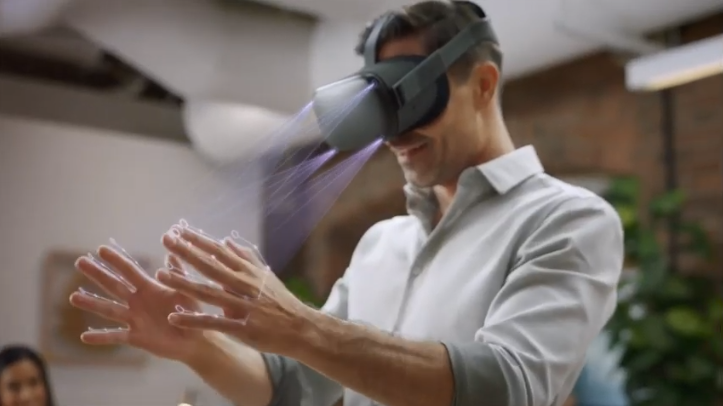OC6: Oculus Quest Native Hand Tracking Takes Users to a New Level of VR Immersion
One of the biggest announcements during the Oculus Connect 6 was of the planned Oculus Quest update that will see the implementation of hand-tracking into the platform in 2020.
This has been expected for quite some time but it is still interesting to see how the feature will be implemented into the Quest system. Hand tracking comes to Quest next year and will not require any extra hardware like the Leap Motion implementation of the same. Facebook will instead rely on Quest’s existing four monochromatic cameras and computer vision technology.

Oculus has been offering users a broad lineup of virtual reality headsets ranging from the affordable to premium products; standalone to tethered headsets along with consumer and enterprise-focused virtual reality headsets. Its diverse ecosystem of products has given it a leading edge in the market. This year, the spotlight on the Oculus ecosystem has been on the Quest headset.
Quest is Oculus’ first real stab at the mainstream virtual reality market and the response has been impressive so far. It offers end users same capabilities as the Rift but without the inconvenience of having to purchase additional equipment or tether the headset to a PC. The Oculus Go headset has its own ecosystem which includes the simple games and video-focused apps but in terms of performance, it doesn’t provide users with virtual hands and full positional tracking.
There is Oculus Touch which offers end users an excellent way of interacting with the virtual environment on the Oculus Quest headset but it has its limitations. There is the learning curve involved in using Touch which can be a huge barrier to end users. The most intuitive way of touching and controlling virtual reality experiences is simply by using your hands. Some companies such as Leap Motion have been innovating on this.
Facebook has now confirmed that it is working on a hand-tracking solution set to be released in early 2020 that will allow for hand-tracking on Oculus Quest. Facebook Reality Labs developed this solution using neural networks and artificial intelligence that recognize the user’s hands.
Facebook explains that the solution started as a research project at its Facebook Reality Labs through the collaboration of its product and design teams that create a new paradigm for virtual reality input. Facebook’s computer vision team developed the new method through deep learning that helps understand the position of the user’s fingers through the monochrome cameras on Quest without the requirement for active depth-sensing cameras, additional processors or extra sensors. The Oculus technology will approximate the shape of the user’s hands and create sets of 3D points that will accurately render the user’s hands and finger movements in virtual reality.
Hand-tracking will come to Oculus Quest as an experimental feature for consumers and as software development kit (SDK) for developers. With the rollout of the solution, VR developers will have the ability to develop apps that support hand-tracking and allow for more natural gameplay experience.
It’s not apparent whether the Quest’s new hand-tracking solution will be added to the existing software on the Oculus Store or the range of apps and videos that will support the hand-tracking functionality.
https://virtualrealitytimes.com/2019/09/28/oculus-quest-hand-tracking-takes-users-to-a-new-level-of-vr-immersion/https://virtualrealitytimes.com/wp-content/uploads/2019/09/Oculus-Quest-Hand-Tracking-600x337.pnghttps://virtualrealitytimes.com/wp-content/uploads/2019/09/Oculus-Quest-Hand-Tracking-150x90.pngHardwareOculus QuestTechnologyVR HeadsetsOne of the biggest announcements during the Oculus Connect 6 was of the planned Oculus Quest update that will see the implementation of hand-tracking into the platform in 2020. This has been expected for quite some time but it is still interesting to see how the feature will be implemented...Sam OchanjiSam Ochanji[email protected]EditorVirtual Reality Times - Metaverse & VR
